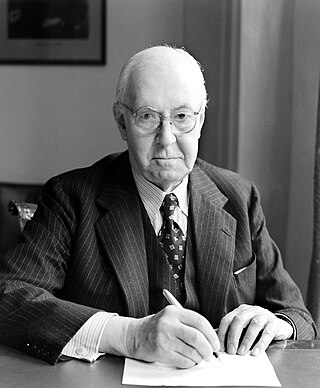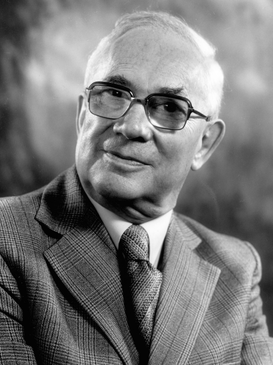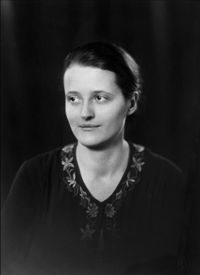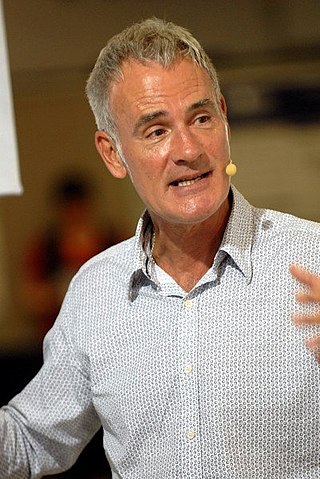
Sir Henry Hallett Dale was an English pharmacologist and physiologist. For his study of acetylcholine as agent in the chemical transmission of nerve pulses (neurotransmission) he shared the 1936 Nobel Prize in Physiology or Medicine with Otto Loewi.

The National Institute for Medical Research (NIMR), was a medical research institute based in Mill Hill, on the outskirts of north London, England. It was funded by the Medical Research Council (MRC);

Hans Walter Kosterlitz FRS was a German-born British biochemist.

Sir John Henry Gaddum was an English pharmacologist who, along with Ulf von Euler, co-discovered the neuropeptide Substance P in 1931. He was a founder member of the British Pharmacological Society and first editor of the British Journal of Pharmacology.

Charles Halliley Kellaway, was an Australian medical researcher and science administrator.

The British Pharmacological Society is the primary UK learned society for pharmacologists, concerned with research into drugs and the ways in which they work. Members work in academia, industry, regulatory agencies, and the health services, and many are medically qualified. The Society covers the whole spectrum of pharmacology, including laboratory, clinical, and toxicological aspects.
Saxena is an Indian surname primarily found in northern and Central India. Kayastha in origin, it derives from the Sanskrit word sakhisena meaning “friend of the army”.

Jawaharlal Nehru Medical College is the constituent medical college of Aligarh Muslim University, located in Aligarh, in the Indian state of Uttar Pradesh.

Marthe Louise Vogt was a German scientist recognized as one of the leading neuroscientists of the twentieth century. She is mainly remembered for her important contributions to the understanding of the role of neurotransmitters in the brain, especially epinephrine.
David Anthony Brown, was emeritus Professor of Pharmacology at University College London, having joined the department in April 1987 and served as Head of Department from October 1987 to April 2002.

Syed Ziaur Rahman is a permanent member of 'Board of Trustees' and Chair of the Advisory Council, International Association of Medical Colleges (IAOMC). He also serves as Chairman, Department of Pharmacology, Jawaharlal Nehru Medical College, Aligarh, Elected Secretary of IAOMC and Society of Pharmacovigilance, India (SoPI).

Krishan Chandra Singhal is an Indian pharmacologist and has been serving as founder vice chancellor of NIMS University, Jaipur, India.
Prem Narain Saxena was the Founder Professor and Chairman of the Department of Pharmacology, Jawaharlal Nehru Medical College, India. He made several notable contributions to the fields of traditional medicine and neuropharmacology. His demonstration of the wound-healing property of Curcuma longa was a major contributor to India's successful challenge of the US patent on the wound-healing property of Haldi. He was intimately involved in discovery and pre-clinical development of the non-barbiturate hypnotic Methaqualone. His basic studies have helped in understanding the role of various neurotransmitters in thermoregulation. He also standardized the use of Setaria cervi for discovery of new anti-filarial agents.
Graham Leon Collingridge is a British neuroscientist and professor at the University of Toronto and at the University of Bristol. He is also a senior investigator at the Lunenfeld-Tanenbaum Research Institute, Mount Sinai Hospital in Toronto.
Mahdi Hasan was an anatomist from Uttar Pradesh, India.
Jawaharlal Nehru Medical College and Hospital, Bhagalpur is a government recognized medical college and hospital in Bhagalpur, Bihar, India.

Anthony Dickenson, FMedSci is Professor of Neuropharmacology at University College, London.

Wellcome Research Laboratories was a site in Beckenham, south-east London, that was a main research centre for pharmaceuticals. Until 1965, this laboratory site was situated in Kent.
The Department of Pharmacology at the University College London, the first of its kind in England, was founded in 1905 and remained in existence until 2007.
Sussan Nourshargh is a British immunologist, pharmacologist, and professor of microvascular pharmacology and immunopharmacology. She founded the Centre for Microvascular research at Queen Mary University.












